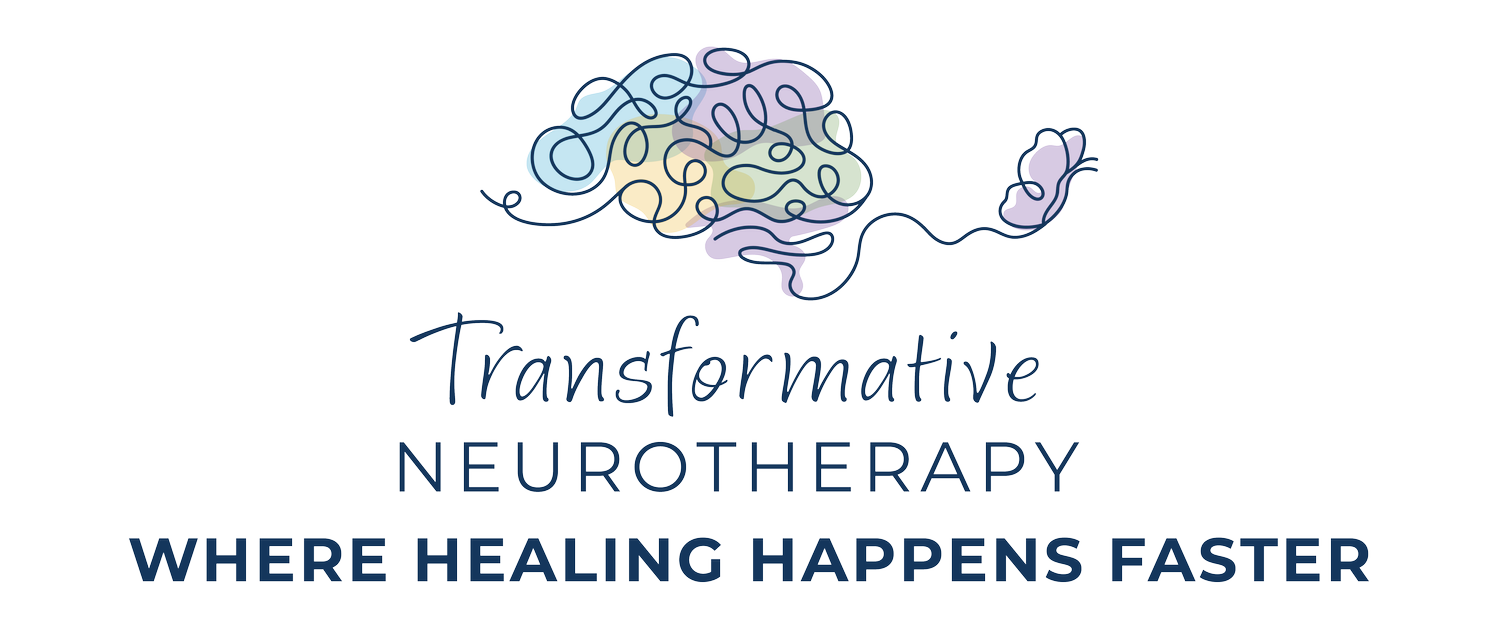EEG MAPPING: TURNING BRAINWAVES INTO INSIGHT (Podcast Episode 4)
by Heather Putney, PHD, LMFT, CSAT-S, QEEG-DL
EXECUTIVE DIRECTOR, FOUNDER
Untethered Therapy and Transformative Neurotherapy
At Transformative Neurotherapy, we believe understanding your brain should feel empowering—not intimidating. EEG mapping might sound abstract until we’re sitting together in the chair, placing the snug cap with 19 channels and watching your brain’s rhythms come to life on screen. From the very first session, we walk clients through every step in plain language, making the science feel clear, personal, and even a little awe-inspiring.
We start with the basics: a comfortable cap aligned to the 10–20 system, gentle ear clips, and small sensors placed over specific areas of the scalp. A bit of conductive gel helps those sensors capture electrical signals clearly, minimizing interference. Those signals travel through colorful leads into our software, which translates them into waveforms—nineteen lines that move in rhythm with your brain’s activity, alongside heart rate and variability. These markers remind us that the brain and body are always in conversation. Blinks, swallows, and small movements create brief “noise,” but once the system filters that out, we’re left with a snapshot of your brain’s unique language—its frequencies, amplitudes, and patterns of connection.
Once the data is clean, the real transformation begins. We translate those signals into a map that helps us understand how different regions are working together. We often compare it to a symphony: each part of the brain has its own instrument and tempo. When one section plays too loudly or another drops out, the harmony changes. EEG mapping helps us see where balance is strong and where a little tuning might help.
Each frequency band plays a role. Delta waves support deep rest and recovery. Theta connects to intuition, creativity, and inward focus. Alpha bridges conscious and subconscious states—it’s what often shows up during calm awareness or meditation. Low-beta supports focus and engagement, while high-beta signals alertness and vigilance. When high-beta stays elevated for too long, the brain can feel stuck in “alert mode”—ready for threat, even when none is present. Mapping helps us identify those patterns so we can support a smoother, calmer rhythm.
Because every brain tells a different story, personalization is key. We align each map with the client’s symptoms, goals, and lived experience. If language feels sluggish, for example, and we see slowed activity in the left frontal region, we might target that area to support faster processing and connection. If anxiety shows up as spiky beta that doesn’t settle, we’ll focus on strengthening calming rhythms and widening the alpha window so the brain can shift states more easily. For trauma-related patterns—like when someone can’t relax in a quiet restaurant or feels “on guard” even in safety—we often combine neuromodulation with gentle vagus nerve stimulation to help the body access its natural calm.
This approach works from both directions: guiding the brain’s rhythms (top-down) while supporting the body’s natural regulation (bottom-up). Over time, the brain begins to remember what balance feels like—and hold onto it between sessions.
How often we meet depends on your goals. Intensive programs, which include two sessions per day over a week, can help the brain change more quickly. We typically remap at the end of the week to measure shifts and adjust focus areas. Standard sessions, often three times per week, move at a steadier pace, with remapping after 15–20 sessions to track progress.
Throughout the process, we look at both data and lived experience—improvements in sleep, focus, calm under stress, word finding, or recovery after difficult days. When the maps and daily experience align, sessions begin to space out. The goal isn’t ongoing treatment; it’s lasting self-regulation. Once the brain re-learns balance, it tends to keep it.
What makes EEG mapping so meaningful is the clarity it provides. Instead of labeling someone “anxious” or “distracted,” we can see which circuits are overworking and which need more support. The goal is harmony—enough energy for focus, enough quiet for rest.
The process itself is simple: measure, map, modulate, and maintain.
For high performers, that can mean smoother transitions between deep work and relaxation.
For those living with trauma, it can mean shrinking the window of alarm and widening the window of safety.
For anyone feeling foggy, unfocused, or “off,” it can mean rediscovering what mental clarity feels like again.
By blending neuroscience, compassion, and a whole-person approach, EEG-guided neurotherapy helps the brain remember its natural rhythm—turning abstract waves into a roadmap for lasting, real-world change.
